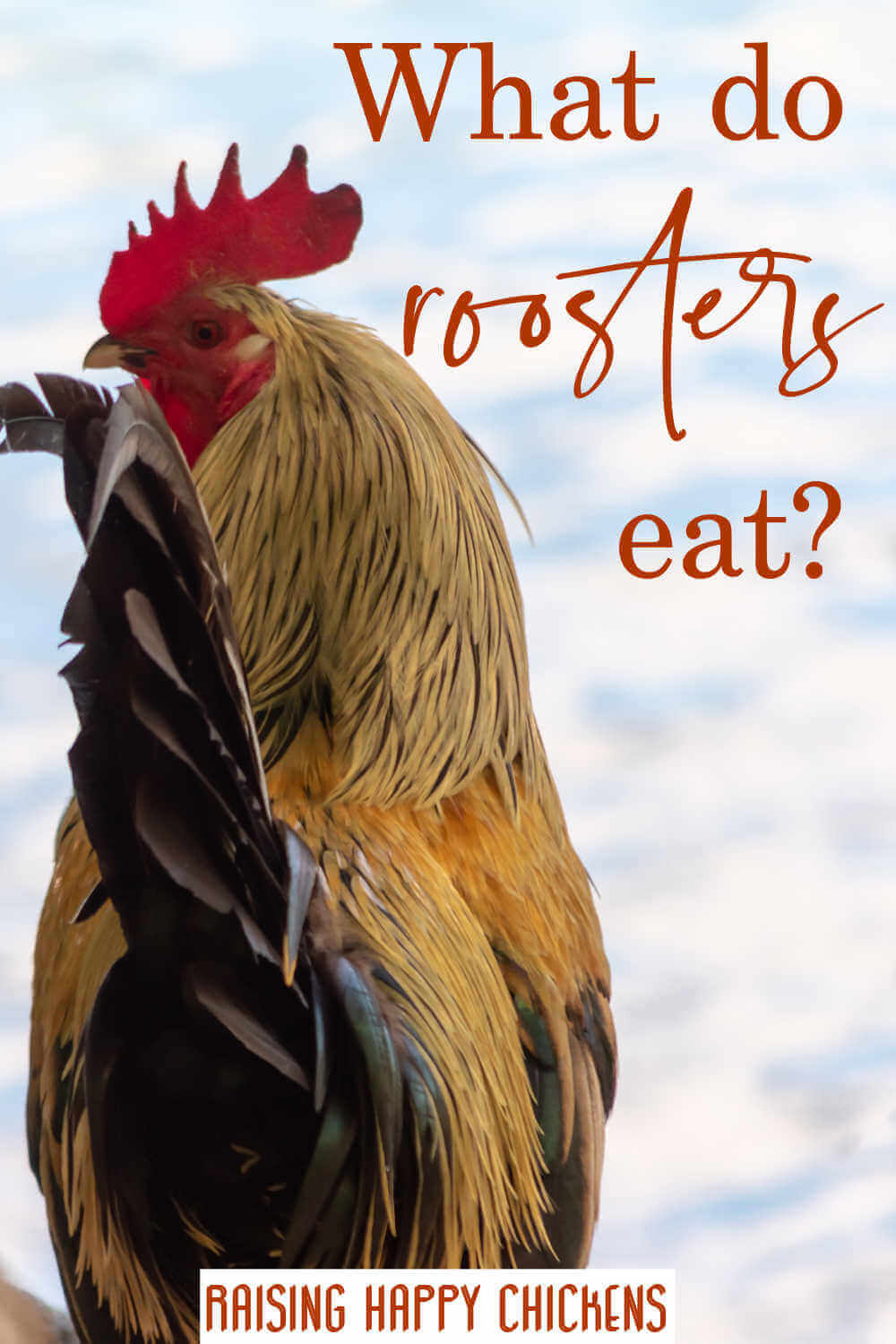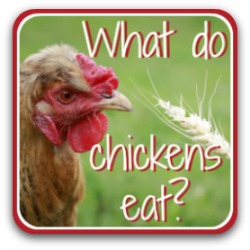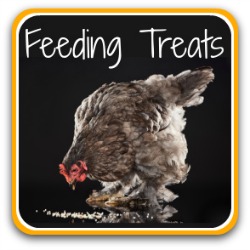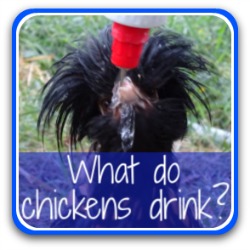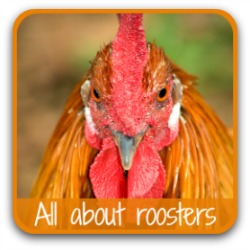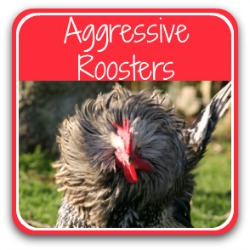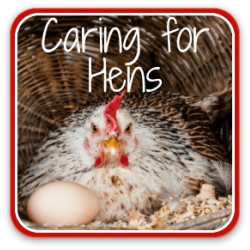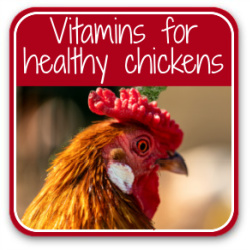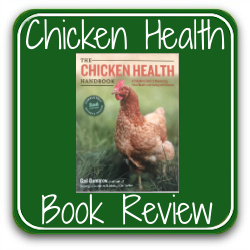Worried about what roosters should eat?
We may be quite knowledgeable about what makes a healthy diet for hens, but what about our roosters?
Fact: roosters don't lay eggs. So are their nutritional needs different to hens, who do?
If so, what are they?
And how, in a mixed gender flock, is it possible to make sure that the males get the proper levels of nutrients to meet their needs?
In this article we'll examine...
* the needs of male chicks to the age of eight weeks
* the changing needs of the growing rooster
* what happens when hens change to layer feed?
If you purchase a product through links on this page, I may receive a small commission at no extra cost to you. I only recommend products I have bought (or would buy) myself, and which I believe will genuinely benefit you. You can read my full disclosure policy here.
What do baby rooster chicks eat? 0 to about 8 weeks.
It's often an irrelevant question, because it will only be clear which baby chicks are male if they're from sex linked chickens such as the Red Star, or auto-sexed breeds like the Welsummer or Cream Crested Legbar.
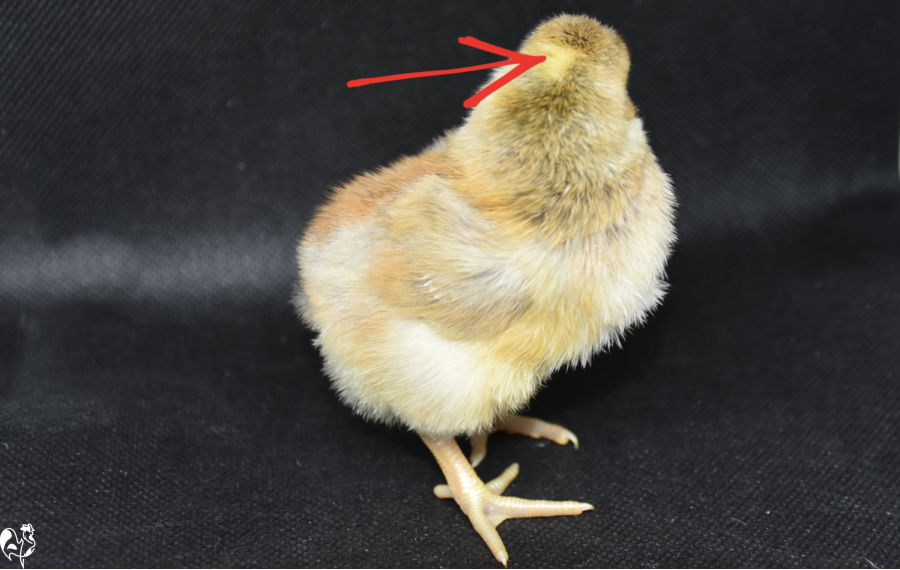 One of my Cream Crested Legbar chicks. The yellow dot on the head indicates a male.
One of my Cream Crested Legbar chicks. The yellow dot on the head indicates a male.In any event, baby chicks from hatch until about eight weeks of age all have the same basic nutritional needs:
- Immediately after hatch they don't need anything. The egg yolk they absorbed in the final hours of incubation keeps them nourished for between 24 and 48 hours.
- After that, all chicks need high levels (around 20%) of protein, and specific vitamins and minerals, to cope with the enormous growth spurts they put on during those first weeks.
- Commercially produced "starter" chick feed, also known as "chick crumbs", is properly balanced to satisfy the needs of the growing chick.
- As for any age of chicken, look for a good quality, organic, non-GMO food. Avoid brands which are "bulked out" with soy.
What do growing roosters (cockerels) eat, 8 to about 18 weeks?
A male chicken who is no longer a chick and under the age of a year old is formally known as a cockerel, although "rooster" is the commonly accepted generic name in the US.
Although it's usually clear during this stage whether a chicken is male or female, there's no need to feed differently here either.
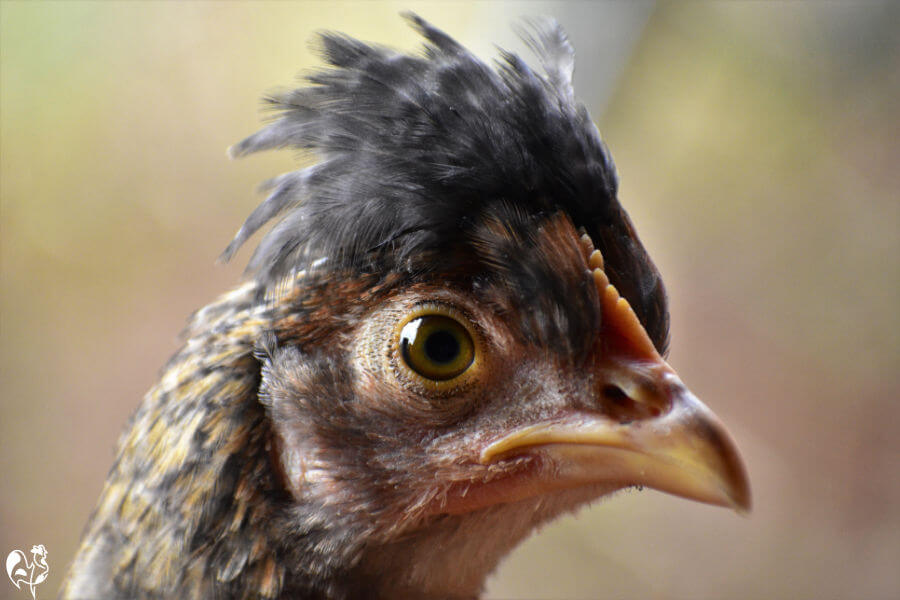 The teenage years: my Cream Crested Legbar male at 13 weeks.
The teenage years: my Cream Crested Legbar male at 13 weeks.- All chickens now require less protein as their growth in the "teenage months" slows down.
- The ideal level is around 16% - 17%.
- Swapping to a "grower" feed covers the changing needs.
- If your chicks reach 8 weeks and you have some starter feed left over, mix it with their grower food so they graduate from one to the other over a couple of weeks without upsetting their digestion.
- Again, find a good quality, organic, non-GMO feed.
What should a rooster eat after about 18 weeks?
This is where males and females part company.
As female chickens approach the time when they will start laying eggs, they need to ramp up the calcium content in their diet.
If they don't get enough calcium there's a danger that they will lay soft-shelled eggs. Additionally, their bodies will start to take calcium from their bones to make the egg shell.
- So hens should now progress to a layer feed which contains 15% – 16% protein and an increased calcium ratio of between 3% and 5%.
- They also require additional calcium to be freely available in the form of something like oyster shell. Hens will instinctively take this when they realise their calcium levels are low.
But what abut roosters?
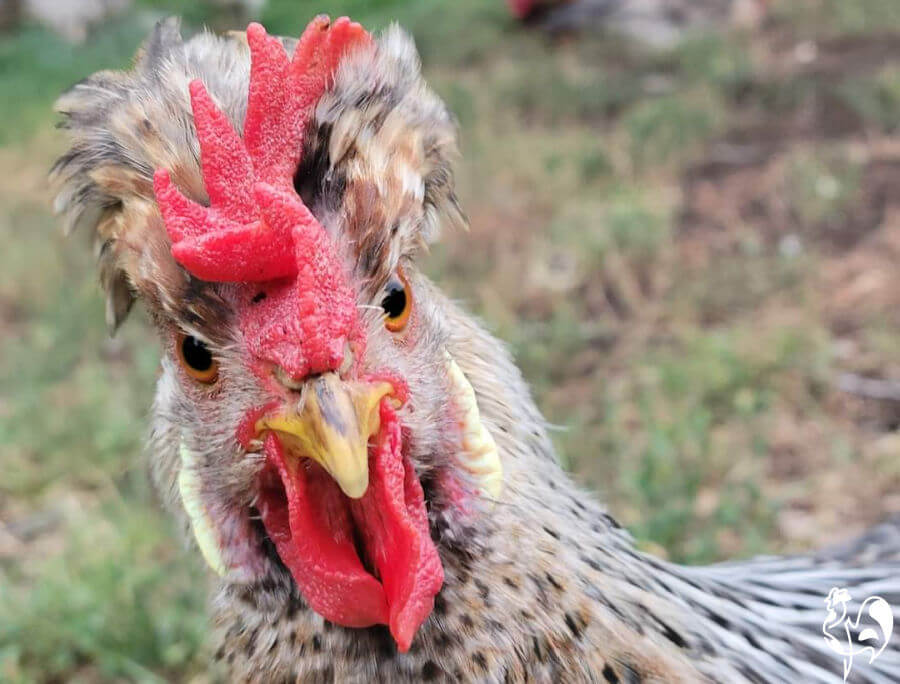 What should adult roosters eat that's different to hens?
What should adult roosters eat that's different to hens?Can roosters eat layer feed?
Not much has been written about roosters' specific nutritional needs, and what there is can be confusing.
- Everyone agrees that males ideally require less calcium (about 1%) than hens.
- There's limited and conflicting research about how much protein roosters require. Early studies which suggested as much as 18% to 20%(1, 2) have been overtaken by more recent evidence which suggests between either 14% and 16%(3), or 15% and 17%(4), depending on how active the rooster is.
- Since layer feed generally contains around 15% to 16% protein, it's more the calcium content which can cause problems.
- There is agreed evidence(1, 2) that too much calcium in the rooster diet can lead to excess deposits in the kidneys, which can ultimately result in kidney failure.
A word about Fatty Liver Hemorrhagic Syndrome (FLHS).
FLHS is a metabolic disorder in chickens caused by excessive fat being stored in the liver – it's basically the same as the impact of obesity in humans.
The most common result is Sudden Chicken Death Syndrome.
You may see information around the internet such as...
"Fatty Liver Hemorrhagic Syndrome or FLHS is another complication that occurs in roosters... FLHS causes mortality and the rate is especially higher in the case of roosters".(1, 2).
In fact, FLHS is a condition previously seen mainly in female chickens(5, 6) kept in small commercial cages with little or no space to move. More recently, it's been observed in backyard flocks where chicken keepers have over-indulged their chickens with treats.
So roosters are as likely to get FLHS as hens, if you over feed them.
How to manage a healthy rooster diet.
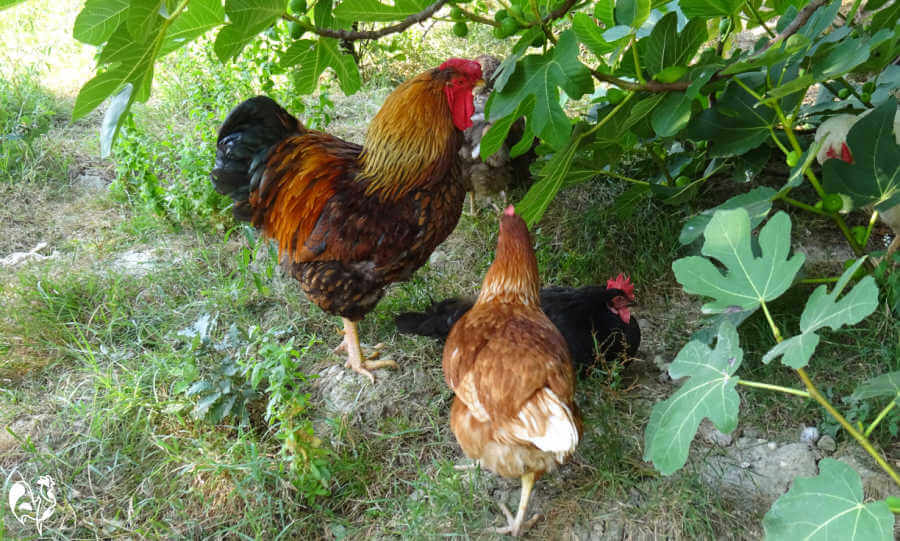 My Golden Laced Wyandotte rooster finds healthy treats for his hens from the fig tree.
My Golden Laced Wyandotte rooster finds healthy treats for his hens from the fig tree.So, if roosters need a different balance of feed to laying hens, how can it possibly be managed in a mixed flock?
There are several options.
1. Use a specific rooster feed.
They're not common, but Purina make a low calcium "Flock Raiser" feed which they recommend is fed to roosters only (although at 20%, it is high in protein).
- In order to do that, of course, you would need to separate roosters from the hens, since 1.5% calcium is too low for laying hens.
- Alternatively, this could be fed to the whole flock with a free feed calcium supplement which hens will take instinctively.
- Roosters will ignore it.

2. Continue to use "grower" feed, supplementing it with calcium fed in a separate container.
Rather than have a separate "flock raiser" food, you could simply continue with the grower feed your flock has been used to.
- Because it's low in calcium, you would need to make sure hens have access to a "free feed" of calcium. In other words, a form of calcium such as oyster shell should not be mixed in with the general feed, but offered in a separate container to which hens have constant access.
- Laying hens will instinctively take as much additional calcium as they need.
- Non-laying hens and males will not touch it.
- If any flock member requires additional protein, they will get it from the bugs they find whilst foraging – or from your healthy treats.

3. Use layer feed.
Most of us like to make sure hens have enough calcium, and I've certainly fed my entire flock, male and female, on layer feed from 18 weeks, without having suffered any specific problems for the roosters.
- If you choose this path, avoid providing your flock with "treats" that contain additional calcium. Choose low fat, healthy treats instead and offer only after the chickens have had access to their feed.
- Treats should only ever account for 10% or less of the chickens' total diet. Overdoing them will lead to FLHS.
- It's important whatever your flock is fed, but particularly if you're going to use layer feed for everyone, that you combine the right ratio of healthy treats with access to an area where they can exercise and forage.
Of course, you could choose not to include roosters in your flock...
But you'd be missing out on a lot of fun – and a riot of colour!
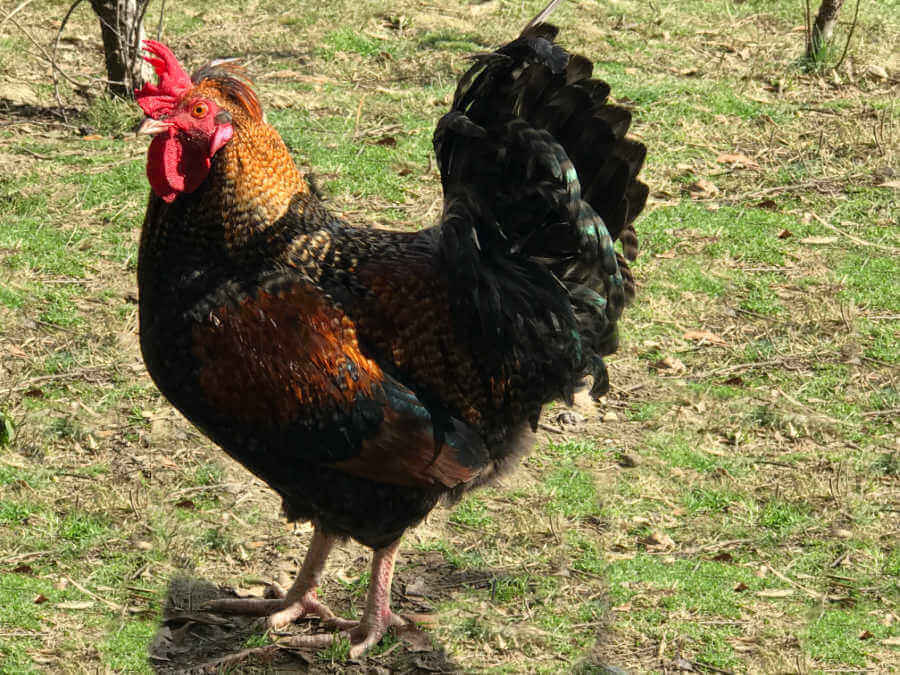 Claudius, one of my mixed breed roosters adds colour to my chicken run!
Claudius, one of my mixed breed roosters adds colour to my chicken run!Some related articles you may find useful.
Sources.
A lot of "facts" you'll find on the internet are often people's individual views, based on inaccurate information repeated from poor quality sources.
The information I provide in this article and others is based not just on my own experience, but on evidenced facts from scientific, peer-reviewed research and books from highly respected and experienced poultry keepers such as Gail Damerow.
Some of the trusted sources I have used in this article are these.
1. Sibbald, I. R.: “The effect of level of feed intake on metabolizable energy values measured with adult roosters.” Pub. Journal of Poultry Science, 1975.
2. Azeem, S.: Can roosters eat layer feed? Pub. ZPoultry, 2022; updated March 2023.
3. Lemme, E. M., and Selim, A. M.: Protein requirement of White Leghorn roosters for maintenance and growth. Pub Journal of Poultry Science, 2003.
4. Renema, R. A., et al: Dietary protein and amino acid requirements of male broiler breeders and roosters. Pub. Journal of Poultry Science, 2006. found that male broiler breeders and roosters require approximately 12% dietary protein for maintenance and 15-17% dietary protein for optimal growth.
5. Crespo, C.: Fatty Liver Hemorrhagic Syndrome in Poultry. Pub. MSD Veterinary Manual, 2019, updated 2022.
6. Shini, S, et al: Unravelling fatty liver haemorrhagic syndrome. Pub. Journal of Avian Pathology, 2019.
